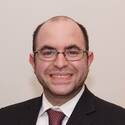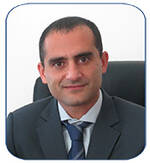PainRelief.com Interview with:
Nico Sollmann, M.D., Ph.D.
Resident in the Department of Diagnostic and Interventional Radiology
University Hospital Ulm, and the
Department of Diagnostic and Interventional Neuroradiology
University Hospital Rechts der Isar in Munich, Germany
PainRelief.com: What is the background for this study?
Response: Neck pain is very common among patients with primary headache disorders, such as tension-type headache or migraine. However, neck pain is mostly neglected during diagnosis as well as for treatment concepts in patients with such headache disorders.
Our study revealed alterations of the trapezius muscles in subjects with tension-type headache and subjects with tension-type headache plus migraine attacks by using quantitative magnetic resonance imaging. We suggest that those changes (i.e., increase of T2 values of the trapezius muscles) may be related to subtle edematous changes within the musculature, which might stem from inflammation. .
PainRelief.com: What are the main findings?
Response: Given that we also found significant associations between those muscular changes and the number of days a subject suffered from headache over the 30 days prior to imaging as well as neck pain, our study may provide objective evidence for the interrelationship between the neck area and the brain in headache disorders
PainRelief.com: What should readers take away from your report?
Response: Primary headache disorders may be linked to neck pain, and quantitative magnetic resonance imaging may help to visualize and objectify changes of neck musculature that might be related to subjectively perceived pain. Involvement of neck muscles in primary headache disorders may relate to subtle inflammatory alterations in muscle tissue.
PainRelief.com: What recommendations do you have for future research as a result of this study?
Response: The application of quantitative magnetic resonance imaging can objectively detect changes of the trapezius muscles in subjects suffering from headache disorders, thus providing a quantitative biomarker. Such a biomarker has not yet been available, and it could be used to phenotype patients, monitor the disease status, as well as treatment effects.
In a planned randomized controlled trial, we would like to combine quantitative magnetic resonance imaging (for diagnostics) with peripheral magnetic stimulation (for treatment) to provide a comprehensive framework combining a novel treatment approach with therapy monitoring. Such a trial could help to elucidate effects of peripheral magnetic stimulation by an objective method that is targeting the neck musculature in headache disorders, thus providing the possibility to potentially relieve muscular pain and headache.
No disclosures. The study has been published as an open-access article in the meantime for more detailed information. (https://thejournalofheadacheandpain.biomedcentral.com/articles/10.1186/s10194-023-01626-w)
Citation:
- RSNA 2023 abstract: https://press.rsna.org/pressrelease/2023_resources/2475/abstract.pdf
- Sollmann N, Schandelmaier P, Weidlich D, Stelter J, Joseph GB, Börner C, Schramm S, Beer M, Zimmer C, Landgraf MN, Heinen F, Karampinos DC, Baum T, Bonfert MV. Headache frequency and neck pain are associated with trapezius muscle T2 in tension-type headache among young adults. J Headache Pain. 2023 Jul 12;24(1):84. doi: 10.1186/s10194-023-01626-w. PMID: 37438700; PMCID: PMC10337094.
https://thejournalofheadacheandpain.biomedcentral.com/articles/10.1186/s10194-023-01626-w
The information on PainRelief.com is provided for educational purposes only, and is in no way intended to diagnose, cure, or treat any medical or other condition. Always seek the advice of your physician or other qualified health and ask your doctor any questions you may have regarding a medical condition. In addition to all other limitations and disclaimers in this agreement, service provider and its third party providers disclaim any liability or loss in connection with the content provided on this website.









